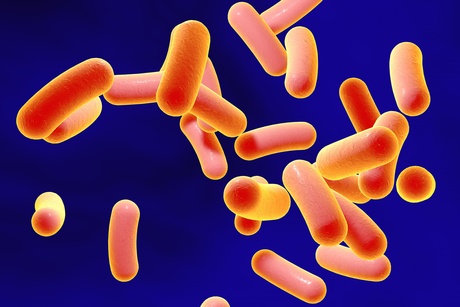Treatment options for foodborne illness decrease, antimicrobial resistance rises

About 25,000 people in Europe die every year as a result of infections caused by antimicrobial resistance. As this resistance is a global problem, the numbers of deaths worldwide must be huge. Some of the most worrying increases in antimicrobial resistance are in microorganisms that are involved in foodborne disease — with Campylobacter and Salmonella standing at the front of the queue.
One of the antibiotics that is causing concern is ciprofloxacin, a second-generation fluoroquinolone with a broad spectrum of activity that is on the World Health Organization’s List of Essential Medicines. The drug is frequently used to treat minor infections — in 2002 fluoroquinolones were the most commonly prescribed antibiotic for adults in the US. Sadly, nearly half (42%) of those prescriptions were for conditions not approved by the FDA (and many were for viruses that do not respond to antibiotics).
Resistance to ciprofloxacin and other fluoroquinolones may evolve rapidly and, as a result of its widespread use to treat minor infections, many bacteria have developed resistance to this drug, leaving it significantly less effective than it would have been otherwise. Scientists in Europe are warning that resistance to ciprofloxacin is very high in Campylobacter, thus reducing the options for effective treatment of severe foodborne infections.
However, the excessive and inappropriate use of the antibiotic in the healthcare system falls into insignificance when you look at the drug’s use in animal husbandry. 80% of all antibiotics sold in the United States are for use on livestock and poultry, and the majority aren’t even given to animals that are sick. Instead, it’s normal practice in the meat industry to mix these drugs with livestock food and water as a “preventative measure”.
The latest annual Europe-wide report by EFSA and the European Centre for Disease Prevention and Control (ECDC) emphasises that antimicrobial resistance poses a serious risk to human and animal health.
The report mentions that multidrug-resistant Salmonella bacteria continue to spread across Europe and that evidence of resistance to the antimicrobial colistin has been found in Salmonella and E. coli among poultry in the EU. Mike Catchpole, Chief Scientist for ECDC, said: “This is worrying because it means that this last-resort drug may soon no longer be effective for treating severe human infections with Salmonella.”
In addition to the high levels of resistance shown throughout Europe, the report found that there are significant regional differences. The highest levels of antimicrobial resistance (AMR) are observed in eastern and southern Europe. Marta Hugas, head of EFSA’s Biological Hazards and Contaminants unit, said: “In northern Europe, there is lower resistance in bacteria from poultry, particularly in countries with low use of antimicrobials in animals.”
Key findings:
Campylobacter — Campylobacteriosis, the disease caused by Campylobacter, is the most commonly reported foodborne disease in the EU. Resistance to widely used antimicrobials, such as ciprofloxacin, was commonly detected in bacteria from humans and poultry. High to extremely high resistance to ciprofloxacin was observed in broilers (69.8%), as well as in bacteria from humans (60.2%). High to extremely high resistance to nalidixic acid and to tetracyclines was reported in broilers.
Salmonella — Salmonellosis is the second most commonly reported foodborne disease. Resistance to widely used antimicrobials was commonly detected in Salmonella from humans (tetracyclines 30%, sulphonamides 28.2%, ampicillin 28.2%) and poultry. The prevalence of multidrug resistance was high in bacteria in humans (26%), and especially high in broiler and turkey meat (24.8% and 30.5%, respectively). Some types of Salmonella bacteria, namely Salmonella Kentucky and Salmonella Infantis, are of particular concern as they showed a high level of resistance to ciprofloxacin and high multidrug resistance. The occurrence of extended spectrum beta-lactamase (ESBL) was observed at low levels in Salmonella from poultry. However, a clone of multidrug-resistant and ESBL-producing Salmonella Infantis was reported in both humans and poultry. Carbapenemase-producing Salmonella were not detected in poultry and meat thereof.
Six beverage trends predicted for 2026
Demand for customisation, 'protein-ification' and sustainable storytelling are some of...
Making UHT processing less intensive on energy
A nutritional beverages company was seeking a more sustainable way to produce UHT beverages using...
Tasty twist for chocolate alternatives
Food scientists develop two novel flavour-boosting techniques to transform carob pulp into a...











